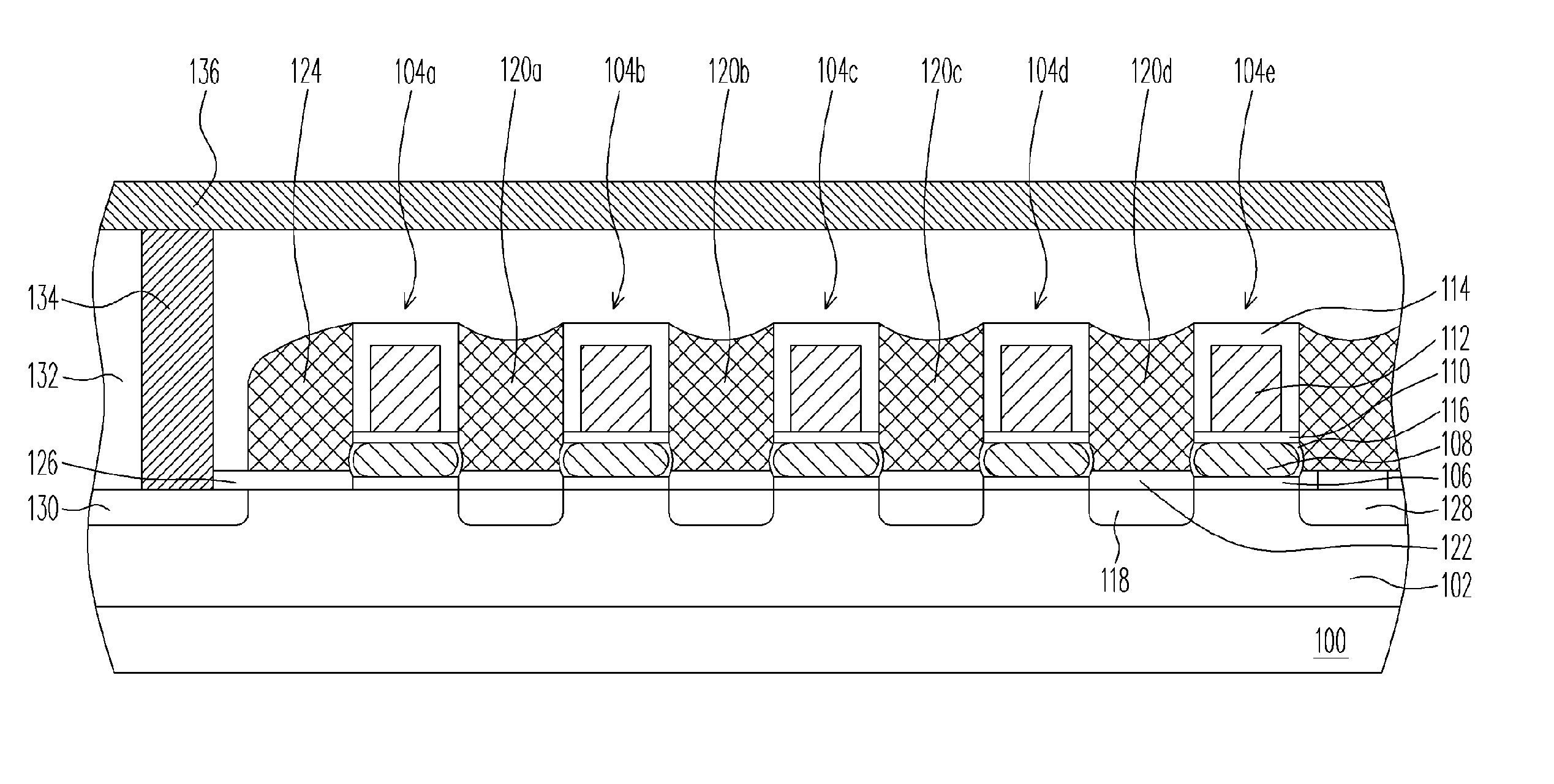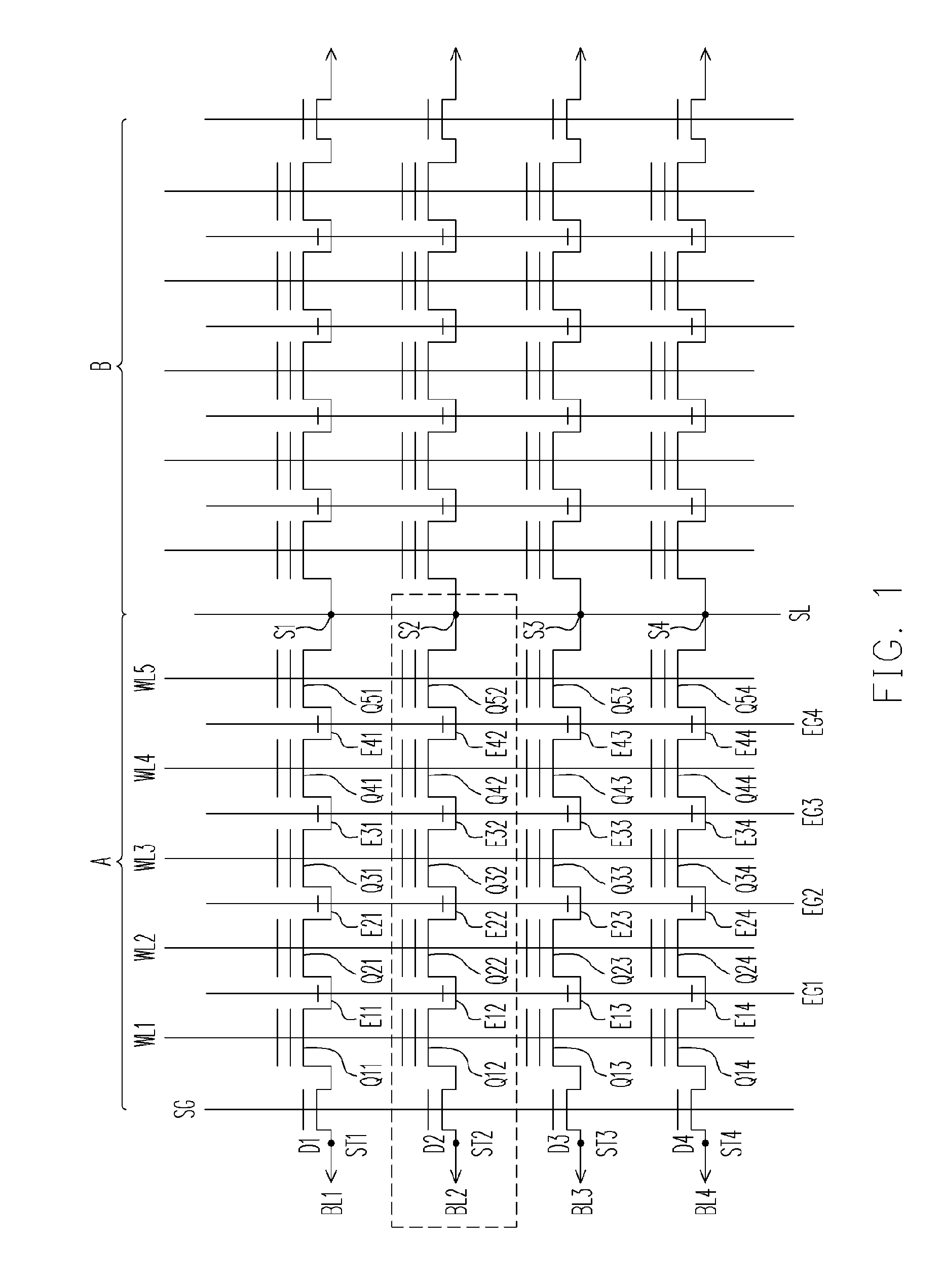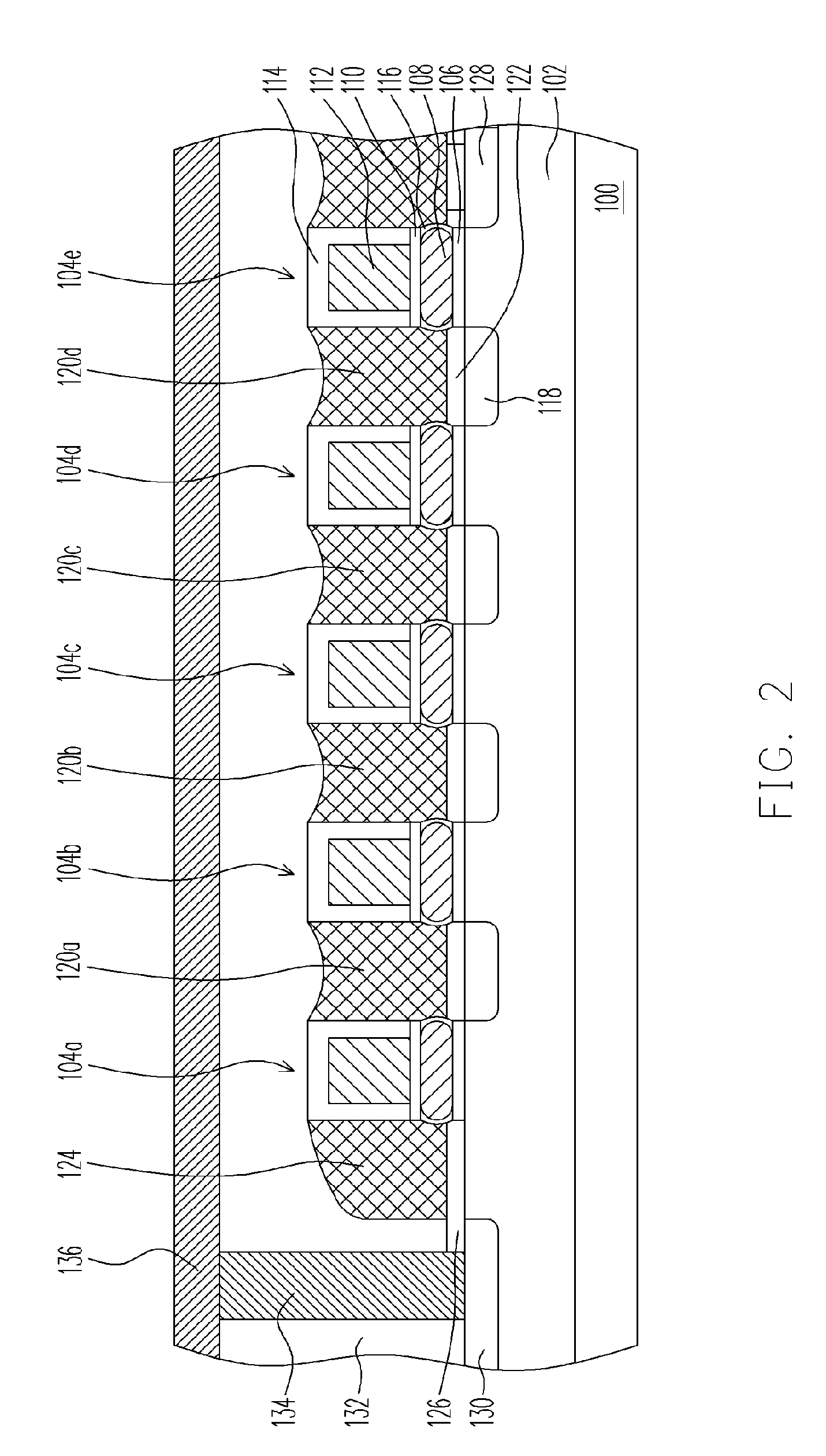P-channel NAND flash memory and operating method thereof
a technology of which is applied in the field of p-channel nand flash memory and operating method thereof, can solve the problems of low efficiency of electron injection, low efficiency of device miniaturization, and relatively high operating voltage, so as to improve the efficiency of memory cells, speed up the programming operation, and reduce the operating voltage
- Summary
- Abstract
- Description
- Claims
- Application Information
AI Technical Summary
Benefits of technology
Problems solved by technology
Method used
Image
Examples
Embodiment Construction
[0025]Reference will now be made in detail to the preferred embodiments of the invention. FIG. 1 is circuit diagram showing a p-channel NAND (Nor-AND gate) flash memory cell array. In this embodiment, a p-channel NAND memory cell array with four rows is illustrated as an example. In this invention, a one time programmable ROM contains memory array A and memory array B, wherein the memory arrays A and B share a source region (source line SL). Only memory array A is further described below since memory array B is structurally the same as memory array A.
[0026]Referring to FIG. 1, the p-channel NAND flash memory cell array contains a plurality of select transistors ST1˜ST4, a plurality of memory cells Q1˜D54, a plurality of word lines WL1˜WL5, a select gate line SG, a plurality of bit lines BL1˜BL4, and a plurality of erase gate lines EG1˜EG4.
[0027]The select transistor ST1 and memory cells Q11˜Q51 form a memory cell row in series connection between a drain region D1 and a source region...
PUM
 Login to View More
Login to View More Abstract
Description
Claims
Application Information
 Login to View More
Login to View More - R&D
- Intellectual Property
- Life Sciences
- Materials
- Tech Scout
- Unparalleled Data Quality
- Higher Quality Content
- 60% Fewer Hallucinations
Browse by: Latest US Patents, China's latest patents, Technical Efficacy Thesaurus, Application Domain, Technology Topic, Popular Technical Reports.
© 2025 PatSnap. All rights reserved.Legal|Privacy policy|Modern Slavery Act Transparency Statement|Sitemap|About US| Contact US: help@patsnap.com



